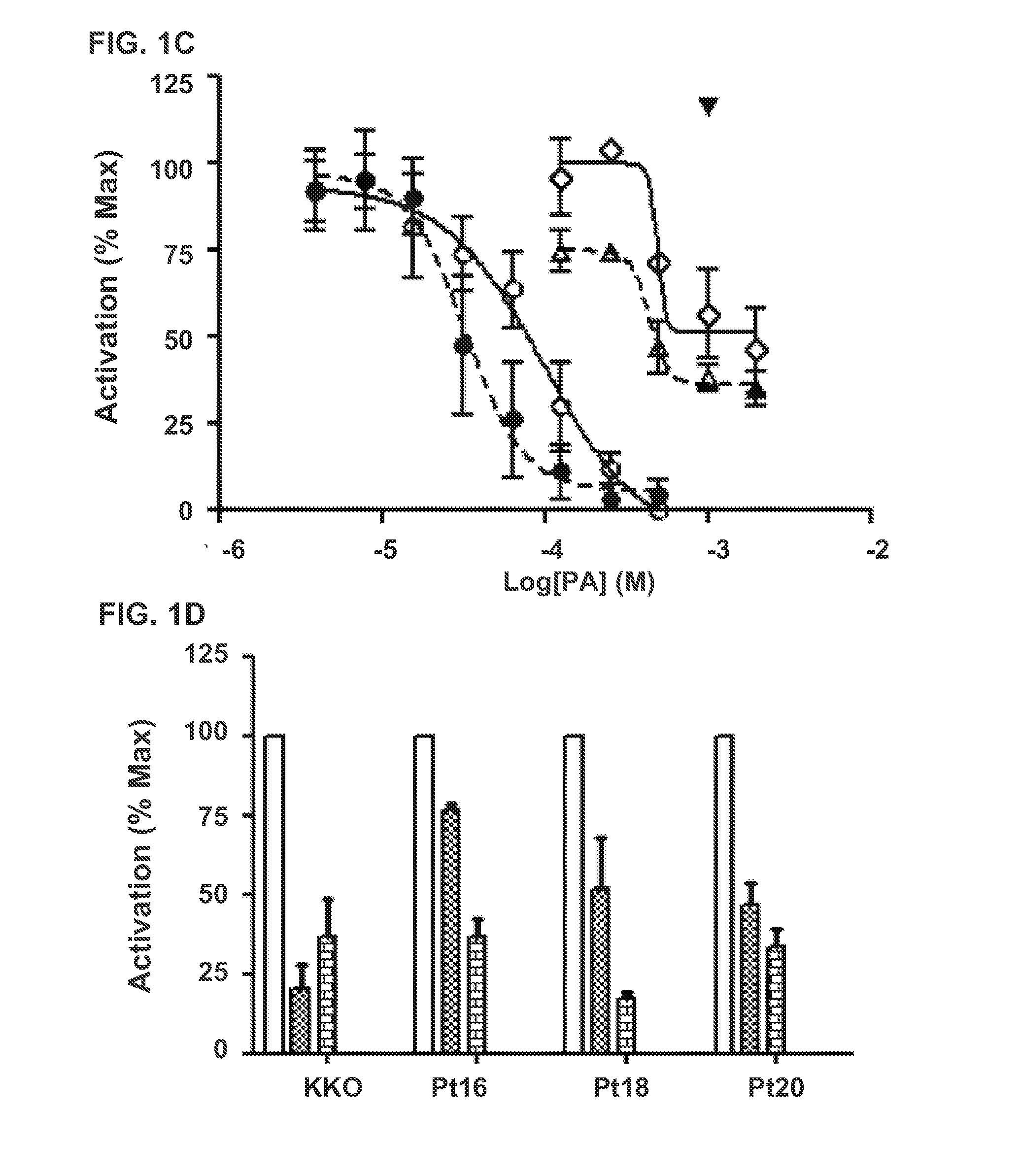Methods of identifying hit-antibodies and pf4 antagonists and cell lines for use therein
a cell line and hitantibodies technology, applied in the field of methods of identifying hitantibodies and pf4 antagonists and cell lines for use therein, can solve the problems of reducing the number of patients with atypical spleen, affecting the survival rate of patients with spleen, and the absence of robust clinical algorithms to include or exclude their diagnoses, and achieves the effect of stable hematopoietic cell lines
- Summary
- Abstract
- Description
- Claims
- Application Information
AI Technical Summary
Benefits of technology
Problems solved by technology
Method used
Image
Examples
example 1
Preparation of B Cells Containing NFAT-Luc and FcγRIIA Plasmids
[0068]B cells used in the novel assays of the invention were prepared as follows. NFAT-Luc was kindly provided by Prof Arthur Weiss (Shapiro, “c-rel Regulation of IL-2 gene expression may be mediated through activation of AP-1”, J. Exp. Med., 184(5):1663-1669 (1996), hereby incorporated by reference). The NFAT reporter contains three copies of a composite NFAT-activator protein-1 (AP-1) element from the human interleukin-2 (IL-2) gene promoter, and is activated by binding of NFAT (nuclear factor of activated T-cells). pEF6-FcγRIIA, which contains the human FcγRIIA coding sequence under the control of the human EF-1a promoter, was constructed by cloning a human FcγRIIA IMAGE clone into the multiple cloning site of pEF6c (Invitrogen).
[0069]DT40 cells (chicken B cells) were cultured in RPMI supplemented with 10% fetal bovine serum, 1% chicken serum (Gibco), 50 μM 13-mercaptoethanol, 2 mM GlutaMAX (Gibco), 100 U / mL penicilli...
example 2
HIT Antibodies Bound to ULC on Platelets Initiate Activation by Engaging FcγRIIA
[0070]To validate that the transfected cells are useful in measuring inhibition of FcγRIIA mediated activation by HIT antibodies in the presence of PF4 and heparin the following experiments were performed.
[0071]On day following transfection, cells were pelleted by centrifugation and re-suspended at 2×106 cells / mL in fresh medium without serum. Cell aliquots (50 μL) were placed into each well of a 96 well plate. To establish basal expression, 50 μL media was added. Further, the cells were also incubated independently with the following: PF4, heparin, RTO antibody, KKO antibody, ULCs alone, ULCs and RTO; ULCs and KKO and IV.3 antibody. Monoclonal antibody IV.3 (an FcγRIIA-blocking antibody) was used in combination with an anti-Fc antibody to activate FcγRIIA bound by IV.3 as a positive control for FcγRIIA signaling. 8 μg / mL of IV.3 was added for 15 minutes at 37° C. under 5% CO2, followed by 50 μL of sheep...
example 3
Inhibition of FcγRIIA-Dependent Cellular Activation by PF4 Antagonists
[0075]We then used this assay to measure the inhibitory capacity of the PF4 antagonist compounds described in the concurrently filed related application referenced above. PF4 (10 μg / mL) and various concentrations of potential antagonists were co-incubated for 60 min at 37° C. under 5% CO2 followed by the addition of heparin (0.3 U / mL) for 15 min at 37° C. in 5% CO2. KKO (20 μg / mL) or plasma from patients with serotonin release assay confirmed HIT (1:800 dilution) was then added. 50 μL of each mixture was added to the 96 well plate containing 50 μL of cells at a concentration of 2×106 cells / mL in fresh medium without serum. Plates were incubated for 6 hours at 37° C. under 5% CO2, and then frozen at −80° C. To measure activation, cells were thawed and lysed with 5× Passive Lysis Buffer (Promega) for 15 minutes. Luciferase activity was measured on a Berthold MultiLumat LB 9506 Luminometer (10 sec readings) using Pro...
PUM
| Property | Measurement | Unit |
|---|---|---|
| concentrations | aaaaa | aaaaa |
| polyspecific ELISA OD | aaaaa | aaaaa |
| concentrations | aaaaa | aaaaa |
Abstract
Description
Claims
Application Information
 Login to View More
Login to View More - R&D
- Intellectual Property
- Life Sciences
- Materials
- Tech Scout
- Unparalleled Data Quality
- Higher Quality Content
- 60% Fewer Hallucinations
Browse by: Latest US Patents, China's latest patents, Technical Efficacy Thesaurus, Application Domain, Technology Topic, Popular Technical Reports.
© 2025 PatSnap. All rights reserved.Legal|Privacy policy|Modern Slavery Act Transparency Statement|Sitemap|About US| Contact US: help@patsnap.com



